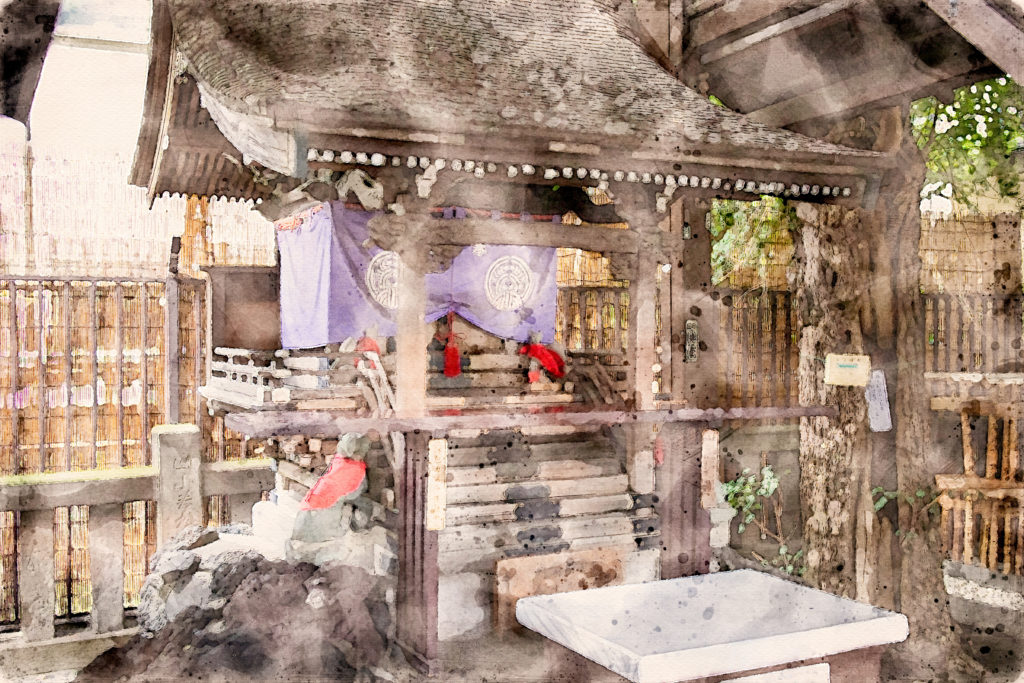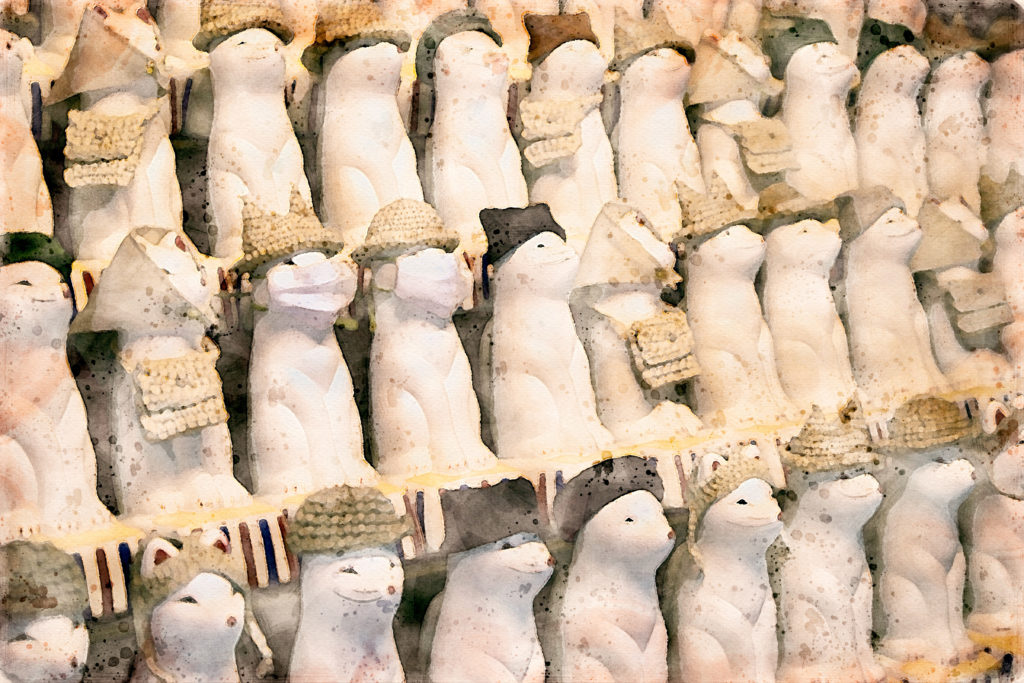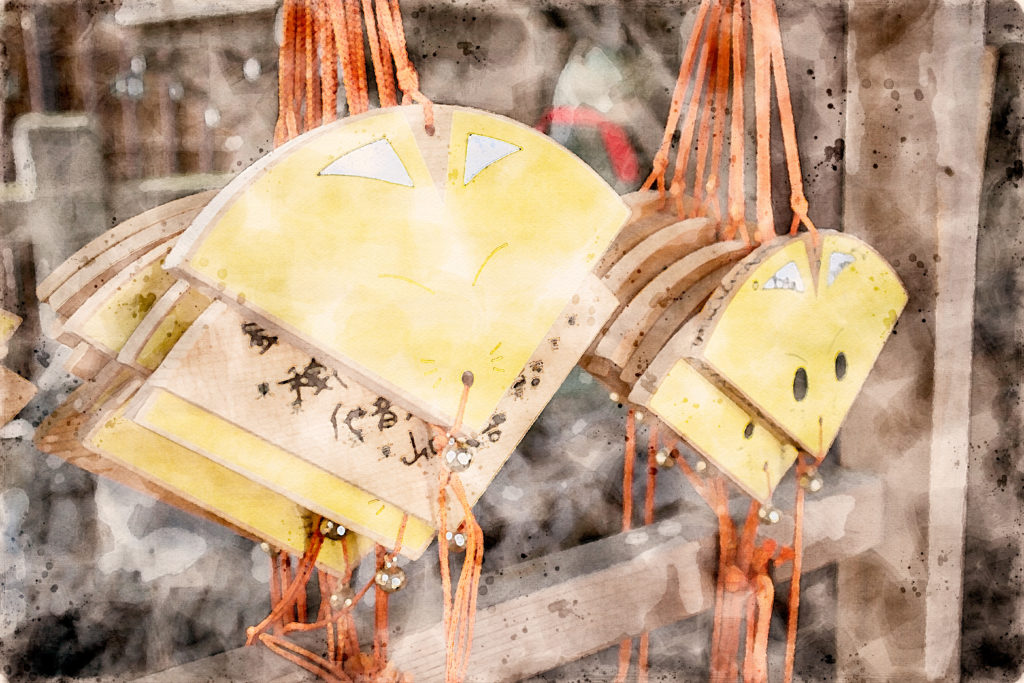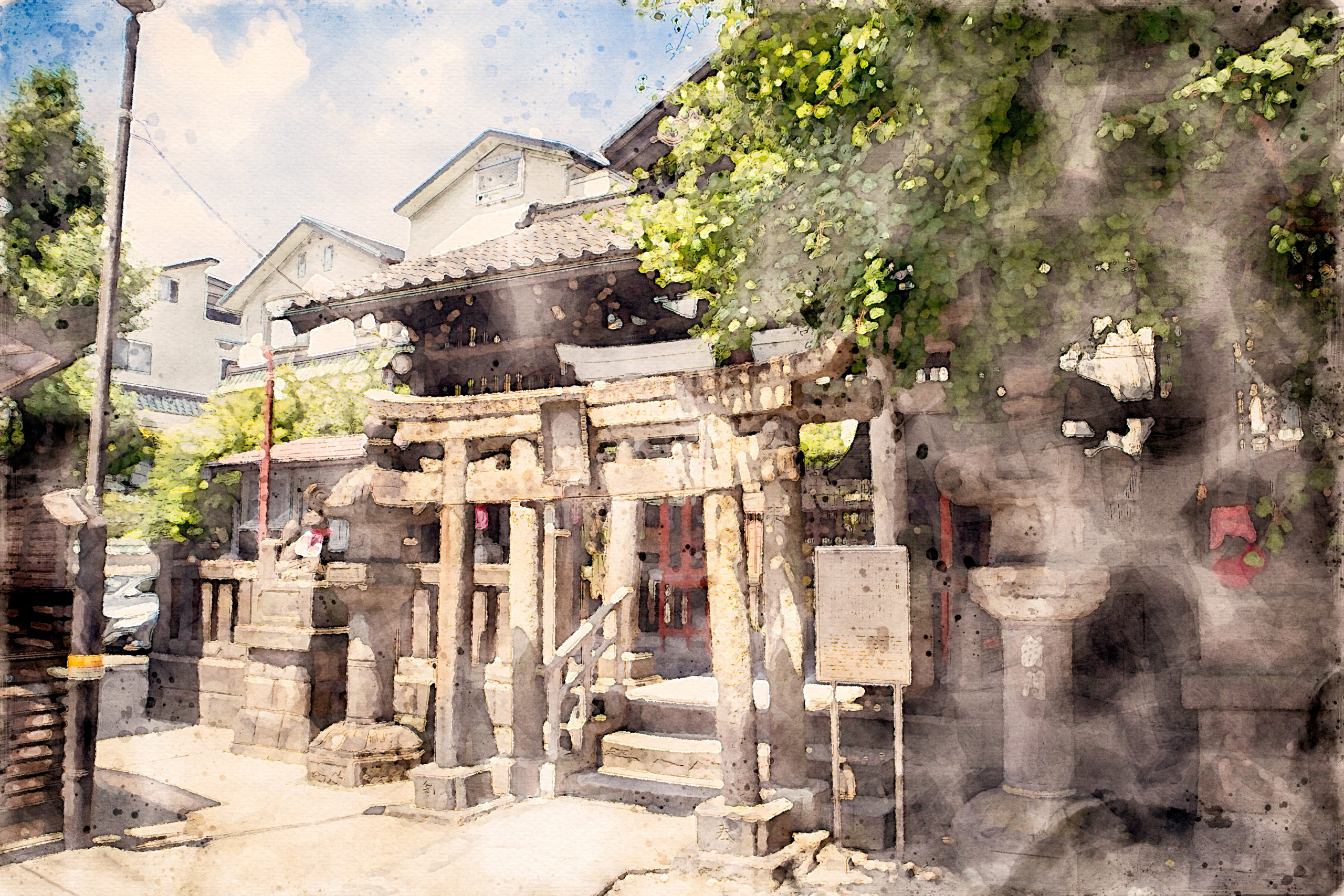The “Shrines and Temples” category of the Tokyo Shitamachi Guide presents Shinto shrines and Buddhist temples in Tokyo’s Shitamachi area, which is the area along and east of the Sumida River.
Each time, we recommend an engaging location for your sightseeing experience in Tokyo. In this article, we will focus on Hikan Inari Shrine, a Shinto shrine in Asakusa, Taito Ward.
Hikan Inari Shrine is a smaller shrine affiliated with Asakusa Shrine. It is located on the right side, facing the worship hall of Asakusa Shrine. Due to its placement, visitors may not immediately notice the presence of this shrine.
At this shrine, worshippers make offerings of small clay fox dolls called “O-Sugata” as they make their wishes. You can find many of these dolls, dedicated by worshippers, near the main hall of the shrine. It is a sight you should not miss.
This article will provide clear and easy-to-understand information on various topics related to Hikan Inari Shrine, including:
- Historical background
- Enshrined deities
- Highlights
- Transportation options
- etc.
Reading this article will help you gain a better understanding of Hikan Inari Shrine. You can use it as a reference when you visit the shrine.
This article is also available in Japanese. You can access it at the following link:
For more information about Asakusa Shrine, please refer to the following article:
History
According to Asakusa Shrine, the history of Hikan Inari Shrine dates back to the 19th century.
At that time, there was a man named Shinmon Tatsugoro, a boss of the fire brigade in Asakusa.
In 1854, Tatsugoro’s wife fell seriously ill. He prayed for his wife’s recovery at Fushimi Inari Shrine in Kyoto. This Shinto shrine holds the highest position among all Inari shrines across Japan.
Tatsugoro was filled with gratitude towards Fushimi Inari Shrine as his wife made a full recovery from her illness. He wished to show his appreciation to the shrine for this blessing.
Tatsugoro built a small Inari shrine in Asakusa in 1855. This is the beginning of Hikan Inari Shrine.
An Enshrined Goddess and Her Blessings
Ukanomitama
The main Shinto deity of Hikan Inari Shrine is Ukanomitama, who is identified with Inari, another Shinto deity.
Ukanomitama is known as a goddess of grains, agriculture, and performing arts. The blessings of this deity include:
- Good harvests
- Business prosperity
- Household safety
- Improvement in performance art
- etc.
Highlights
The Main Building

The main building of Hikan Inari Shrine is incredibly small and follows an architectural style known as Ikkensha-Nagare-Zukuri (一間社流造). This style is characterized by two front pillars and a gracefully curved roof that stretches towards you.
This main building has remained unchanged since it was first built in 1855. It is a precious building, as it even survived both the Great Kanto Earthquake in 1923 and the Bombing of Tokyo in 1945.
The O-Sugata (The Teppo Kitsune)

As previously mentioned, Hikan Inari Shrine is dedicated to Ukanomitama, also known as Inari. In Japanese culture, foxes are believed to be sacred messengers of Inari.
The Teppo Kitsune is a small fox doll crafted in Imado Ware style. It consists of a male and female fox, each with a unique facial expression. At Hikan Inari Shrine, this fox doll is referred to as the O-Sugata instead of the Teppo Kitsune.
On the left side of the main building of Hikan Inari Shrine, you will find a small hut that is specially designated for O-Sugata dolls. These dolls are offered by worshippers who have had their wishes granted at the shrine as a way to show their gratitude. When you visit, you will be astounded by the vast number of O-Sugata dolls dedicated to the shrine.
You can purchase a pair of O-Sugata dolls for 1,500 yen at the shrine office of Asakusa Shrine. You take them home, then you bring them back to Hikan Inari Shrine for dedication after your wish is fulfilled. But, of course, you can dedicate them immediately after purchase.
For your information, the Imado Ware doll is a traditional toy that originated in the Imado area of Asakusa and the Sumida River basin. These dolls gained popularity among commoners during the Edo period. However, the production of Imado Ware dolls ceased after World War II.
Kumano Shrine in Katsushika Ward and Kuchiire Inari Shrine in Taito Ward also have the custom of offering Teppo Kitsune dolls.
For more details about Kumano Shrine, please refer to the following article:
For more details about Kuchiire Inari Shrine, please refer to the following article:
The Koma Kitsune Statue

Hikan Inari Shrine enshrins Ukanomitama, also known as Inari. And you will find many Koma-Kitsune statues at this Shinto shrine. These stone statues represent foxes that are devine messengaers of Inari.
Asakusa, where Hikan Inari Shrine is located, has long flourished as an area for kabuki and performing arts. And one of Inari’s divine virtues is the improvement of performing arts.
As a result, Kabuki actors and entertainers have a deep faith in Hikan Inari Shrine. The many Koma-Kitsune statues offered by Kabuki actors to this Shinto shrine tell the story.

Another remarkable feature of Hikan Inari Shrine is the plaque attached to the third Torii Gate of this shrine. This plaque is adorned with a fox design. When you visit this shrine, make sure not to overlook it.
The Ema Tablet

The Ema is a small wooden tablet or plaque on which worshippers write their prayers.
Unlike the Ema tablets of many other shrines, one at Hikan Inari Shrine is fan-shaped. It is also bright yellow with a cute fox’s face on it. This Ema reminds me of Pikachu from Pokemon smiling.
There are many Ema tablets dedicated to the precincts, so be sure to check them out as well. If you have the opportunity, we also recommend you dedicate one.
Other Useful Information
Opening Hours (Asakusa Shrine)
The business hours of Hikan Inari Shrine’s office are as follows:
- The 1st and 15th days of the month
- From the 1st to the 5th of January
- The Hatsu-Uma day (the first hourse day of February)
- The annual festival day (March 18)
TEL
- 03-3844-1575
Address
- Asakusa 2-31-16, Taito-Ku, Tokyo 111-0032
Google Map
Public Transport (Train)
- 7-minute walk from Asakusa Station on the Ginza Line
- 7-minute walk from Asakusa Station on the Asakusa Line
- 7-minute walk from Asakusa Station on the Tobu Isesaki Line (a.k.a. the Tobu Skytree Line)
- 10-minute walk from Asakusa Station on the Tsukuba Express Line
Public Transport (Megurin Bus)
- 2-minute walk from Sensoji Kita Stop on Megurin North Route (via Asakusa)
- 2-minute walk from Nitenmon Stop on Megurin North Route (via Asakusa)
- 7-minute walk from Kaminarimon Dori Stop on Megurin East-West Route (via Ueno Park)
- 7-minute walk from Kaminarimon Dori Stop on Megurin East-West Route (via Uguisudani Station)
Megurin Bus is a community bus operated by Taito Ward of Tokyo. We recommend you try the Megurin Bus when you visit Taito Ward. That’s because the Megurin Bus will take you to almost any place in the ward for a less expensive fare.
For more information about Megurin Bus, please refer to the following article:
Public Transport (Toei Bus)
- 2-minute walk from Asakusa 2-Chome Stop on Route 上 26 (Ue 26)
- 2-minute walk from Asakusa 2-Chome Stop on Route 都 08 (To 08)
- 2-minute walk from Nitenmon Stop on Route 都 08 (To 08)
- 2-minute walk from Nitenmon Stop on Route 草 68 (Kusa 68)
Public Restroom Availability
- No. But you can find some in the precincts of Sensoji Temple adjacent to Hikan Inari Shrine.









